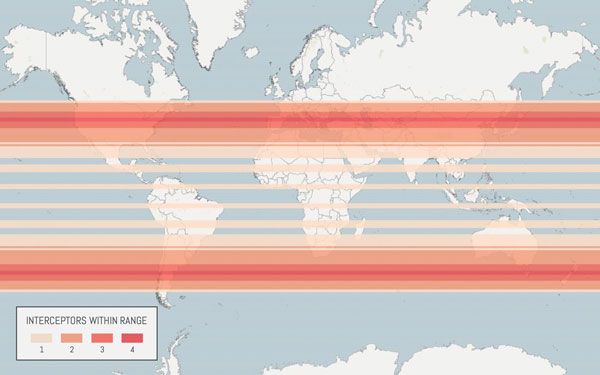Why a space-based missile interceptor system is not viable
By Thomas G. Roberts | June 28, 2018
 A map that shows the relative missile defense interceptor coverage of a certain array of space-based platforms.
A map that shows the relative missile defense interceptor coverage of a certain array of space-based platforms.
The United States has plans to develop two new missile defense programs in the space domain: a space-based sensor architecture and a space-based missile intercept layer. Both proposed systems rely on a network of satellites in low Earth orbit to offer full or partial coverage of the Earth’s surface, precisely tracking a missile during its flight in one case, or shooting it down entirely in the other. A space-based sensor system could expand current capabilities for monitoring missile launches and warrants further study. The deployment of a space-based missile intercept layer, however, would require launching hundreds or thousands of weapons into space – an expensive, inefficient, and provocative idea. The technical discussion surrounding space-based interceptors should be decoupled from that of space-based sensors – a much more plausible proposal. Despite decades of support from influential policymakers, the resources required to deploy space-based interceptors would be better spent on other layers of US missile defense.
Read more:
Together, we make the world safer.
The Bulletin elevates expert voices above the noise. But as an independent nonprofit organization, our operations depend on the support of readers like you. Help us continue to deliver quality journalism that holds leaders accountable. Your support of our work at any level is important. In return, we promise our coverage will be understandable, influential, vigilant, solution-oriented, and fair-minded. Together we can make a difference.















